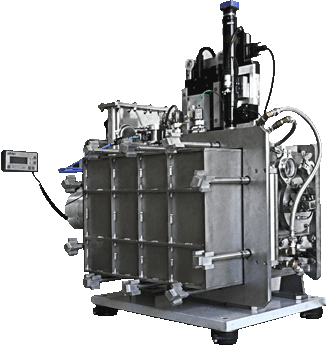As any indentation system, the instrument basically measure load and displacement plus temperature. Regarding load, of course, all the load sensor concepts commonly used by commercial systems don’t support such high level of temperature due to the gradients and instability sources.
ONERA has then mixed load and displacement measurement to correct dilatation effects. The load sensor, based on a classical strain gage technology, is on the first hand positioned in a cold zone of the instrument and on the second hand, continuously corrected by a devoted displacement gage to correct any remaining thermal drift.
Regarding displacement, a non contact sensor based on a capacitive gage, associated with a piezo transducer is used. This technique allows the lowest possible drift in association with a high stiffness device.
Temperature is of course a key point. Different problems must be solved: temperature gradient between sample and tip, stability control during the test, measurement at the right position,…The design developed use the best possible compromise between all these problems ( right choice, positioning and control algorithms of temperature sensors)
The result allows to achieve uncompromised level of performance in a temperature controlled mechanical testing system.
Last but not least, the software fully control the system and allows the user to design and analyse his own kind of experiment trough a well established standard and can be then easily shared by the scientific community.

